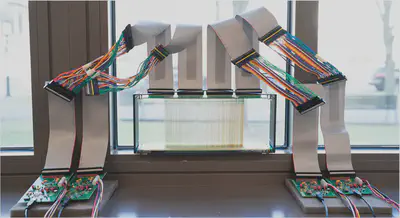mmWall: steerable, transflective metasurface for mmWave networks

mmWall is the first reconfigurable intelligent surface that uses metamaterials to refract, reflect, and/or split incoming mmWave beams in desired directions. Its key technical contribution is enhancing reliability for mmWave networks. As a user enters the building, mmWall deployed on the window seamlessly refracts outdoor signals and precisely steers them toward the user indoors, making outdoor-to-indoor communication possible. When buildings occlude signals towards an outdoor user, mmWall provides a strong alternative path by reflecting signals towards the user. Furthermore, it splits the incoming beam and simultaneously sweep multi-armed beams to enable fast beam search. My extensive evaluation has shown that in this way, mmWall has the potential to dramatically improve reliability and spectral efficiency of networks as a whole.